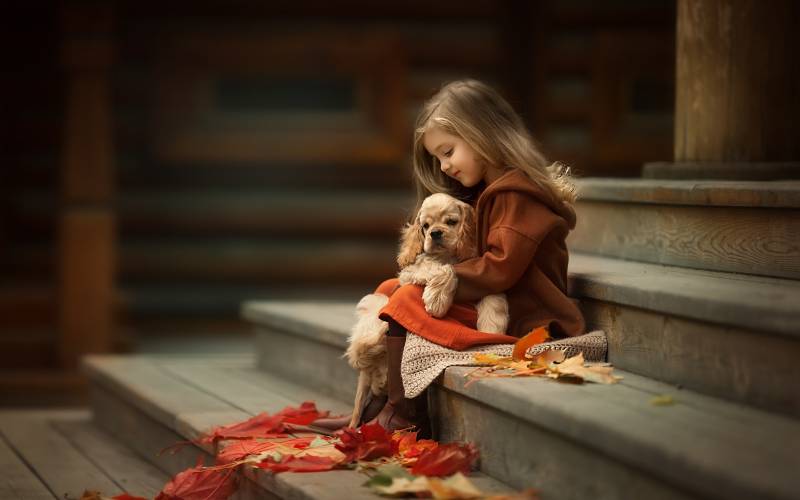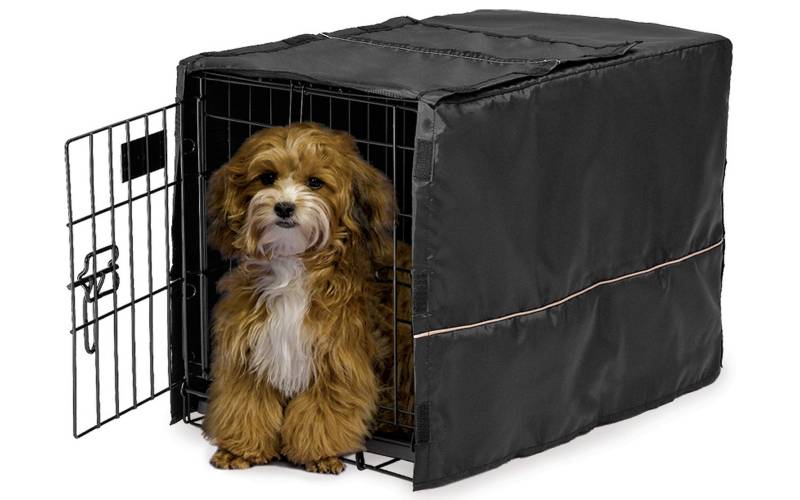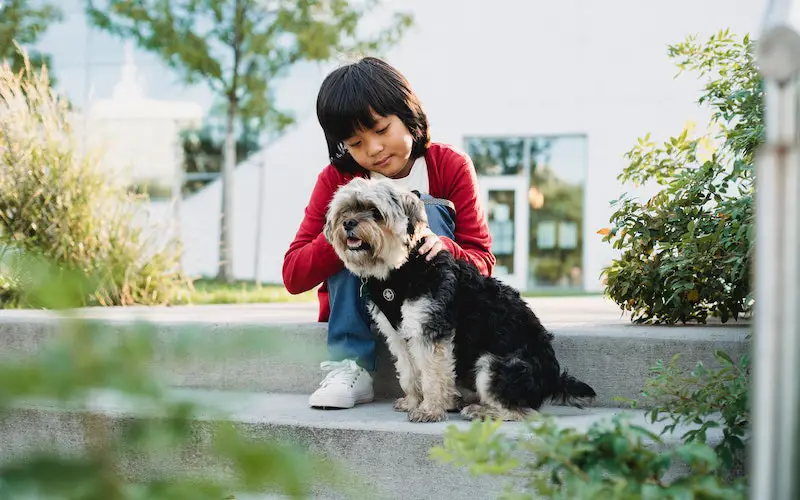Are you a dog owner with children? Or perhaps you have dogs at home and children often come to visit? Keeping dogs and children safe when they are together is vitally important. You want to educate children and bring them up to respect dogs so that they are less likely to get bitten or hurt. At the same time, you want your dogs to be used to meeting children and for them to have positive experiences with kids so that they don’t get aggressive. Today’s blog is all about dogs and children – how can they live together happily and safely?
Why dogs and children sometimes don’t mix
Children can expel a lot of energy including running and screaming – these loud noises and fast movements may not be what a dog is used to and can ‘wind them up’. When dogs and children are both hyper, that is when accidents are most likely to happen.
If children are playing with dogs they can get bitten by mistake – this is often the case if a child teases them with a treat or a toy. It could be that the child steps on the dogs paw or falls on them by mistake, but this could result in a dog bite as the dog would just be protecting themselves in that situation. So avoid allowing children to run and play with dogs unsupervised. Rough games such as tug-o-war should be discourage or best left to the adults.
Some children who are not used to having dogs around may be over excited and eager to touch them, but they have not been taught how to stroke a dog gently. Young children have a tendency to go for pulling dogs tails and ears which is painful for dogs. The dog may snap back to protect themselves.
Never Leave a dog and child alone together
The other thing to remember is that no matter how friendly a dog is, you must NEVER leave dogs and children alone together. Never trust a dog with a child no matter how well you think you know him or her. A dog can turn at any time, and also a child may tough the dog inappropriately or unexpectedly and this could mean that the dog snaps in retaliation. If a dog and child are in the same room, there should always be an adult present to supervise.
If you look at the extreme – it is a fact that children have actually been killed by being left alone with very aggressive dogs. Severe dog bites on a child’s head or body can kill them. A dogs jaws are very powerful and when dogs go into ‘attack’ mode they may bite and clamp their jaws without letting go.
The dangerous Dogs act of 1991 banned the following four breeds in England:
However, it is difficult to specify which breeds are good or bad around children, because sometimes dogs that are from a traditionally ‘friendly breed’ may become aggressive and dogs that have an aggressive reputation may be friendly.
Sometimes a puppy is best
Dogs who have not been socialised with children since young pups may be scared if they are not used to them. If you are having a baby or maybe fostering or adopting a young child into your home then often a puppy is best.

That is because the puppy can grow up with the dog and they can create a bond together. A puppy is also less likely to do damage when biting than a full grown dog – mostly the puppy will be play biting when it is young.
It is good for children to learn to stroke their puppy gently and learn not to pull or tug ears and tails. Also young children can play a role in the dogs routine such as feeding and giving treats which will strengthen the bond.
Setting up your home
Ensure that your dog or dogs have a ‘safe space’ which is a bed or crate or den where he can go and be left in peace. Children should be taught never to annoy a dog when he is in his own bed – this is his personal space. Some people convert a space for their dog such as creating a den or dog house under the stairs.
Your dog should have a space in the kitchen or utility where he eats and drinks. Children should not enter that space unsupervised and should be taught to not annoy or stroke the dog while he or she is eating. This is because dogs can show resource guarding which means that they can become more aggressive around their food.

It is a good idea to teach the dog to stay downstairs and not go upstairs in the house. There are several reasons for this…
- Dogs can display more possessive behaviour about a bedroom if they are allowed to go in or sleep there.
- Dogs may knock you over on the stairs if they run up or down under your feet. This can be very dangerous if you are carrying small child and fall down the stairs. So a baby gate at the bottom of the stairs can be a good idea for keeping dogs downstairs.
- Young children often wake up in the middle of the night for support from parents or carers. If a dog is sleeping upstairs he/she might bark and startle children during the night. The dog might also get under your feet while you are looking after sick children in the night or helping them to get back to sleep.
Sometimes if you have a big house it is a good idea for the dog to have more than one bed, so that whichever downstairs room he is in, he has somewhere ‘safe’ to go. Many owners like to crate train their dogs. A crate can be very comfortable because you can cover the crate in a blanket – this makes it very cosy and private for them.
First Introductions
When you first introduce your dog to a new child, it is important that the dog does not greet them at the door. Door knocking and door bells cause high energy in dogs and this can make them very barky and jumpy. So the dog should not be introduced at the door.
Let everyone come in and sit on sofas or at a dining table. Once everyone is sitting down give them a small treat to give to the dog when he enters the room. The dog should be given time to calm down and focus on treats. Then let him enter the room with everyone sitting calmly and quietly. This is a better approach because he can be given a treat on first meting and then be given time to sniff and get to know people.
Positive Reinforcement dog training
If your dog is not used to being around children and there is a child joining your family, you should consider introducing them slowly and using positive reinforcement dog training to allow the dog to get used to the new child.
You can use a clicker to ‘mark’ the good behaviour. So if the dog is sitting calmly or well behaved near to the child or children then click the clicker and give the treat within 5 seconds. Repeat as the dog gains more exposure and each time the reward is reinforcing that it is good to be calm around kids. The click-treat shows the dog that being around the children gets a reward and that means it is a positive experience for them.
You might like to read this article about puppy clicker training.
Tips for Keeping Children and Dogs safe
- Introduce dogs to children calmly when everyone is sitting down – avoid introducing them at the door which is a high energy situation.
- Make sure that children and dogs are always supervised when together.
- Children should know that they are not allowed to approach or annoy a dog sleeping in his bed.
- Teach children not to pull dogs ears or tale and teach them to stroke dogs gently from a young age.
- Children can help to feed the dog or give him treats for creating a good bond.
- But they should learn to give dogs treats with a flat hand to avoid fingers being snapped by mistake.
- There are dog training schools which teach kids about handling dogs – this can be a good bonding experience.
- Keep your dog well exercised so he is more likely to be relaxed when he is at home.
Further reading on Dogs and Children
If you found this article helpful, you might like to read:

